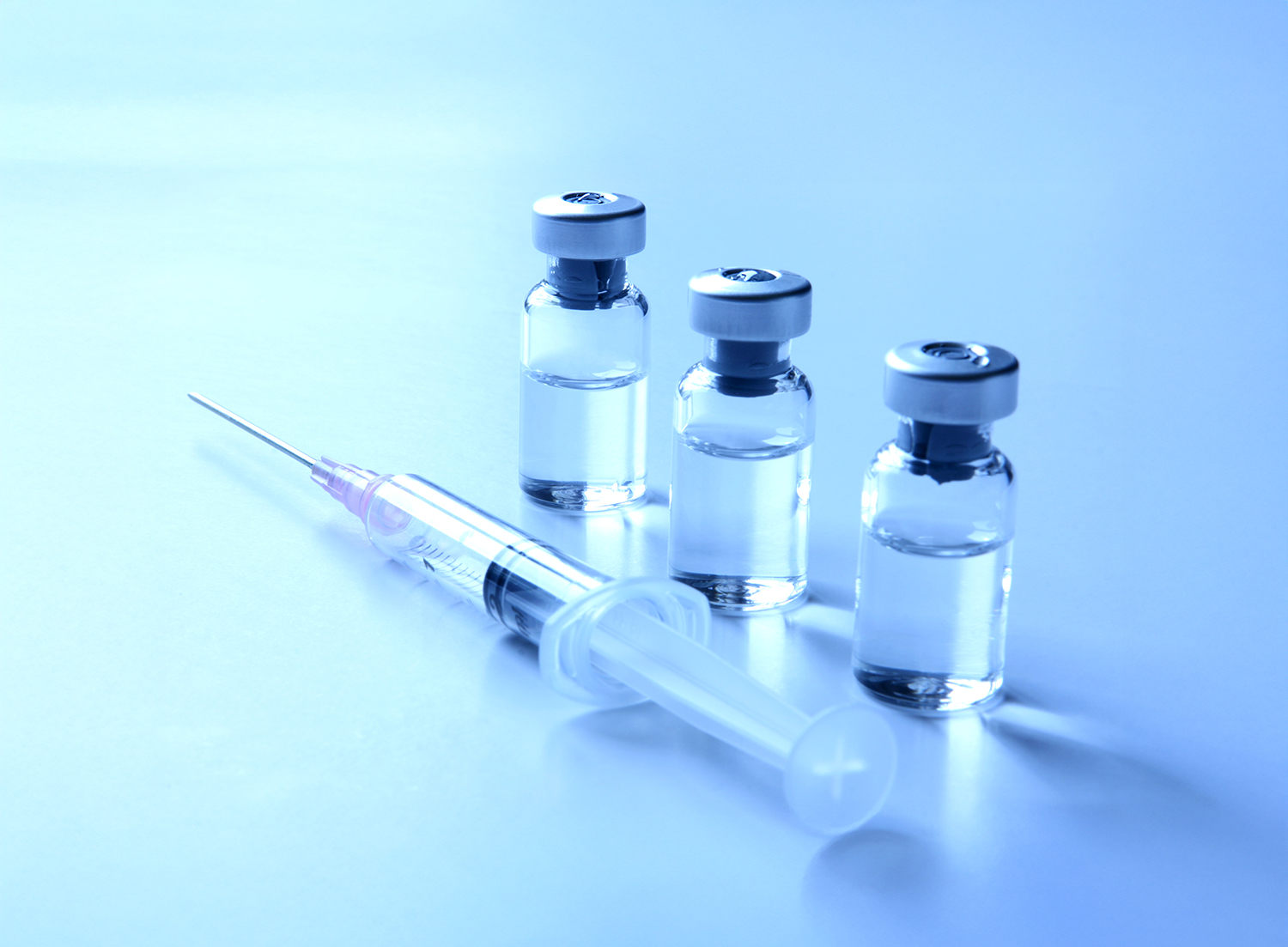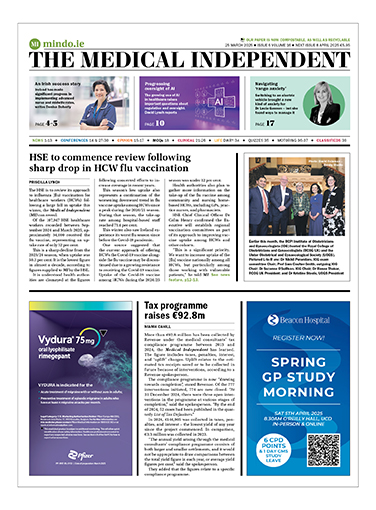With a new physical activity plan imminent and activity and sedentary behaviour guidelines recently published, David Lynch examines how policies linking health and exercise are advancing
Irish athletes’ excellent performances at the Olympics and Paralympics in Paris brought to a close another hectic summer of national and international sport.
In recent decades, the intersection between sports and medicine has been one of growing research and increasingly significant policy measures.
The Government’s next national physical activity policy is due to be published soon (see panel p4). It will complement new national physical activity and sedentary behaviour guidelines published in March.
Speaking at the launch of the guidelines, the then Chief Medical Officer, Prof Breda Smyth, said: “The more time spent being physically active, the greater the health benefits – even relatively small increases in moderate level physical activity can contribute to improved health and quality-of-life.”
The new guidelines are a “positive step”, Dr Maeve Haran, Senior Registrar in Child and Adolescent Psychiatry, told the Medical Independent (MI).
In April 2023, Dr Haran co-wrote a letter published in the Irish Medical Journal (IMJ) titled ‘Why are we not prescribing physical activity?’. The letter was co-authored with Prof Fiona McNicholas, Professor of Child and Adolescent Psychiatry, School of Medicine, University College Dublin (UCD).
Dr Haran pointed out that healthcare professionals rely on evidence-based medicine and the new guidelines offer a summary of evidence with recommendations relating to sedentary behaviour and physical activity across the lifespan.
“As such, these guidelines could help inform future physical activity prescribing practices. They provide clinicians with an easily accessible resource which could reduce knowledge barriers in… promotion.”
Dr Haran described it as “particularly encouraging” that all age categories were considered, with guidelines for very young children being recommended for the first time in Ireland.
“While these guidelines were primarily developed to support healthcare practitioners, it would also be very desirable to effectively share this knowledge with the public such as through public health campaigns.”
Communications
Ms Sarah O’Brien, HSE National Lead, Healthy Eating and Active Living Programme, told MI that the guidelines have been promoted across the HSE communications channels, including social media and in the HSE magazine Health Matters.
“Over 630 people joined the webinar to launch the guidelines [in] March and the majority of attendees were healthcare professionals,” she told MI.
The HSE Healthy Eating and Active Living Programme is developing a communications plan together with promotional resources aimed at increasing awareness and promotion to all health professionals.
“As part of this, we will be seeking to engage with a range of health professionals who are interested in actively championing the guidelines with their peers,” said Ms O’Brien. “We are looking forward to working closely with the newly established national health improvement team under Dr Diarmuid O’Donovan.”
Dr Kevin Volf (PhD), from the Department of Physical Education and Sports Sciences at University of Limerick, has researched and published on the evaluation of physical activity initiatives and policies.
Issuing national physical activity guidelines is recommended by the World Health Organisation (WHO) and is valuable “for various reasons”, Dr Volf told MI.
“Guidelines raise awareness of physical activity health benefits, guide research, enable population physical activity targets to be set and progress towards these physical activity targets to be monitored.”
Dr Volf said evaluating the impact of guidelines is “important”.
“I also think it’s important to be clear on what it is exactly that we need to be evaluating. If data is collected on how many people are meeting the physical activity guidelines, this isn’t a measure of the effectiveness of the guidelines themselves.”
He added that ‘soft policy’ instruments, such as issuing physical activity guidelines and messages, contribute to a healthier environment. However, the effects are often less straightforward to measure than ‘harder’ instruments since they work indirectly.
“We should not expect these measures to transform population physical activity behaviours, much less population health, on their own.”
Efforts to disseminate the guidelines should be measured using “more proximal outcomes like awareness and knowledge of the guidelines within key target audiences”, he said.
Integration
The IMJ letter authored by Dr Haran and Prof McNicholas highlighted the “strong evidence” for physical activity in the “prevention and management” of physical and mental illnesses.
Physical activity assessment and promotion should “therefore be integrated into routine healthcare settings”, they wrote. “Despite this, doctors are generally not trained in promoting… lack knowledge about recommended [physical activity] guidelines… and medical schools’ teaching on [physical activity] is often non-existent.”
Making physical activity assessment and promotion a routine healthcare practice is a “complex task and requires a multiagency approach”, Dr Haran told MI.
“While the Department of Health have the prime responsibility, other national entities, such as the Department of Education and Sport Ireland, have an important supportive role.”
Dr Haran also noted the role of medical schools and postgraduate training bodies in ensuring adequate training of healthcare professionals in physical activity theory and its therapeutic application.
“It’s critical that frontline healthcare professionals are both aware of the importance of [physical activity] and are involved in promoting it to relevant patient groups,” said Dr Haran, who added that “many clinicians are already actively promoting” physical activity in a variety of settings.
“The College of Psychiatrists are active in this and are developing a standardised physical health assessment form which includes… assessment and encourages clinicians to educate patients about recommended… guidelines.”
As a specialty, sports and exercise medicine has taken significant strides in recent decades.
“It certainly has progressed in a big way,” said Dublin-based GP Dr Andrew Delany, who has a special interest in sports medicine. Dr Delany captained the Irish team to victory in the World Medical Football Championship in Austria last year. He spoke on the subject in a recent MI podcast (see www.medicalindependent.ie/podcast/wmfc/).
Dr Delany, who is also a team doctor with the FAI [Football Association of Ireland], said that patients should be asked about their physical activity “in every consultation” given its evidenced-based role in physical and mental health.
“I guess as medical students, we are taught to ask about smoking and ask about alcohol and things like that. But exercise hasn’t been routinely part of the normal consultation.”
Regarding doctors’ health, Dr Delany said: “I think doctors are no different to anybody else in the population and doctors sometimes can neglect themselves. It’s essential that we include exercise as a part of our everyday lives and in whatever form that will be.”
Reflecting on his years playing football, Dr Delany said that “to be part of a team was great. If you’re out on the pitch you’re fighting for each other and it’s just a really good release from the stress.”
“And I think finding something that you can enjoy and something that is sustainable and repeatable is the key.”
In 2019, the IMO AGM passed a motion calling for a publicly-funded sports and exercise consultant service.
The motion was put forward by former IMO President and Emergency Medicine Consultant Dr Mick Molloy.
Dr Molloy said the Department should undertake “a needs capacity and benefit assessment for the introduction of a publicly-funded employed consultant service in sport and exercise medicine”.
Physical activity prescribing
The Department of Health informed MI it “has no plans at present” to undertake an assessment of a potential sports and exercise consultant role.
However, the coming period will witness some significant developments in physical activity prescribing, according to the HSE.
Noting that the WHO Global Action Plan on Physical Activity recommends countries take a “systems-based approach” in their work to improve population physical activity levels, Ms O’Brien said the upcoming National Physical Activity Framework and Action Plan for Ireland (see panel p4) will incorporate this approach.
Ms O’Brien said the WHO recommends health systems put the structures and resourcing in place to enable healthcare practitioners “routinely raise the topic of physical activity” with service users and offer physical activity counselling.
“A physical activity pathway in healthcare is a series of steps an individual healthcare practitioner can take with service users during routine clinical encounters to promote physical activity. These steps align with the ‘making every contact count’ approach of ask, advise, assist.”
She said many countries across Europe and worldwide are taking this approach – in some countries they describe it as a physical activity referral or physical activity prescription. In some countries they focus on one particular group of healthcare practitioners, such as GPs, for example, in Sweden.
In Ireland, the initial phase of the physical activity pathways in healthcare model “will focus on building the capacity of all healthcare practitioners in primary care, including GPs and practice nurses”.
“The target audience is anyone who is engaging with the health service for whatever reason,” said Ms O’Brien.
Through HSE.ie and the new HSE app, service users will be able to access information, behaviour change support, and suitable programmes either online or in their community. Ms O’Brien said this is expected to be available by mid-2025.
A specific exercise referral programme for chronic disease is to be established in one health region, with the HSE due to publish a tender shortly. The outcome of this initiative “could inform similar developments” in the other health regions, said Ms O’Brien.
“The programme will be provided by suitably qualified exercise professionals.” People will receive a one-on-one consultation, as well as the opportunity to participate in a structured exercise programme twice a week for up to 12 weeks. There will be a focus on behaviour change and connecting service users with wider community physical activity opportunities once the programme is complete.
“The ambition is that, in time, there would be equity of access to these types of programmes and supports across the country.”
The HSE has also worked with the National Institute of Preventative Cardiology to develop and offer a free short course to develop healthcare practitioners’ skills and confidence to promote physical activity in clinical practice.
“Dr Andrew O’Regan, GP and academic in University of Limerick, has been involved with the development of the new course,” said Ms O’Brien. Courses in 2024 are full, but more will be offered in 2025.
She added that other higher education institutes are also offering courses in this area, such as one on exercise prescription in UCD.
Ms O’Brien noted that “when we speak with healthcare practitioners about physical activity promotion in practice, they consistently highlight a lack of knowledge on the training and qualification process for exercise professionals”.
This has led to a “consequent lack of confidence in the safety of signposting and referral to community programmes, particularly for service users living with chronic disease”.
To address this issue, she highlighted that the South East Technological University is developing a framework for training and accrediting exercise professionals working with chronic conditions, funded by the HSE and Sport Ireland’s physical activity chronic conditions initiative.
“Since June 2023, they have examined the evidence and consulted with a wide range of stakeholders in health, higher education and the exercise sectors,” said Ms O’Brien. A “very successful” consultation day on a draft framework was held in May this year.
A final framework is expected to be published before the end of the year.
Ireland’s exercise plan
Get Ireland Active – the National Physical Activity Plan (NPAP) was launched in 2016. The plan aimed to get at least half a million more Irish people taking regular exercise within 10 years.
In summer 2022 a review of the plan, conducted by the consultancy firm Crowe, found that a majority of the 60 actions had either been “fully or partially completed”.
While the NPAP did not specifically have an end date, the development of a successor is “nearing completion”, a Department of Health spokesperson told the Medical Independent (MI).
“In the meantime, the NPAP continues to guide cross-sectoral collaboration.”
The spokesperson added that it is “hoped” the new National Physical Activity Framework 2024-2040, together with its first action plan covering 2024-2029, will be launched in the “coming months”.
“It is intended that the successor to the NPAP will take the form of a long-term framework, which will guide a coherent approach to the promotion of, and the removal of barriers to, physical activity by all.”
The NPAP implementation group continues to act as the governing body supporting cross-sectoral collaboration on the promotion of physical activity. Over the past 18 months, the group has primarily focused on the development of the successor to the NPAP.
“Ireland does have evaluation components in our major physical activity policies, so it can be argued that we perform as well as our European peers in that regard,” Dr Kevin Volf (PhD), University of Limerick, told MI.
“The potential issue with these evaluations, of course, is the level of independence.”
Dr Volf noted that evaluations are often by necessity conducted in collaboration with people who are responsible for policy development and implementation.
“For example, the EU/WHO HEPA Monitoring Framework relies on reporting from nationally appointed focal points to assess physical activity policy,” he said.
“Similarly, the Crowe report… liaised closely with members of the national physical activity plan implementation group. So, there’s always a threat that what gets reported paints too rosy a picture.”
He added that he believed the extent of implementation can usually be investigated further, but this was dependant on resources.
“There are various implementation measures we could use to inform us whether the policy action or programme was translated into actual practice,” he added. “I think this is something to be aware of because when a report is issued that tallies how many policy actions are complete or incomplete, it’s worth remembering that this can obscure a more complicated reality.”
How much should we move?
The new national physical activity and sedentary behaviour guidelines for Ireland were launched in March. The document contains specific advice on the amount of time children and adults should exercise.
According to the guidelines, children aged three-to-four years should:
- Spend at least three hours in a variety of physical activities at any intensity, of which at least one hour is moderate-to-vigorous intensity, spread throughout the day.
The guidelines state adults should:
- Spend at least two hours and 30 minutes to five hours of moderate-intensity aerobic physical activity; or at least one hour and 15 minutes to two hours and 30 minutes of vigorous-intensity aerobic physical activity throughout the week.
- Additional muscle-strengthening activities at moderate- or greater-intensity that involve all major muscle groups are recommended on two or more days a week.
Limiting sedentary activity is also a key recommendation across all age groups.
*See the guidelines at: www.gov.ie/en/publication/44751-every-move-counts-national-physical-activity-and-sedentary-behaviour-guidelines-for-ireland/













Leave a Reply
You must be logged in to post a comment.